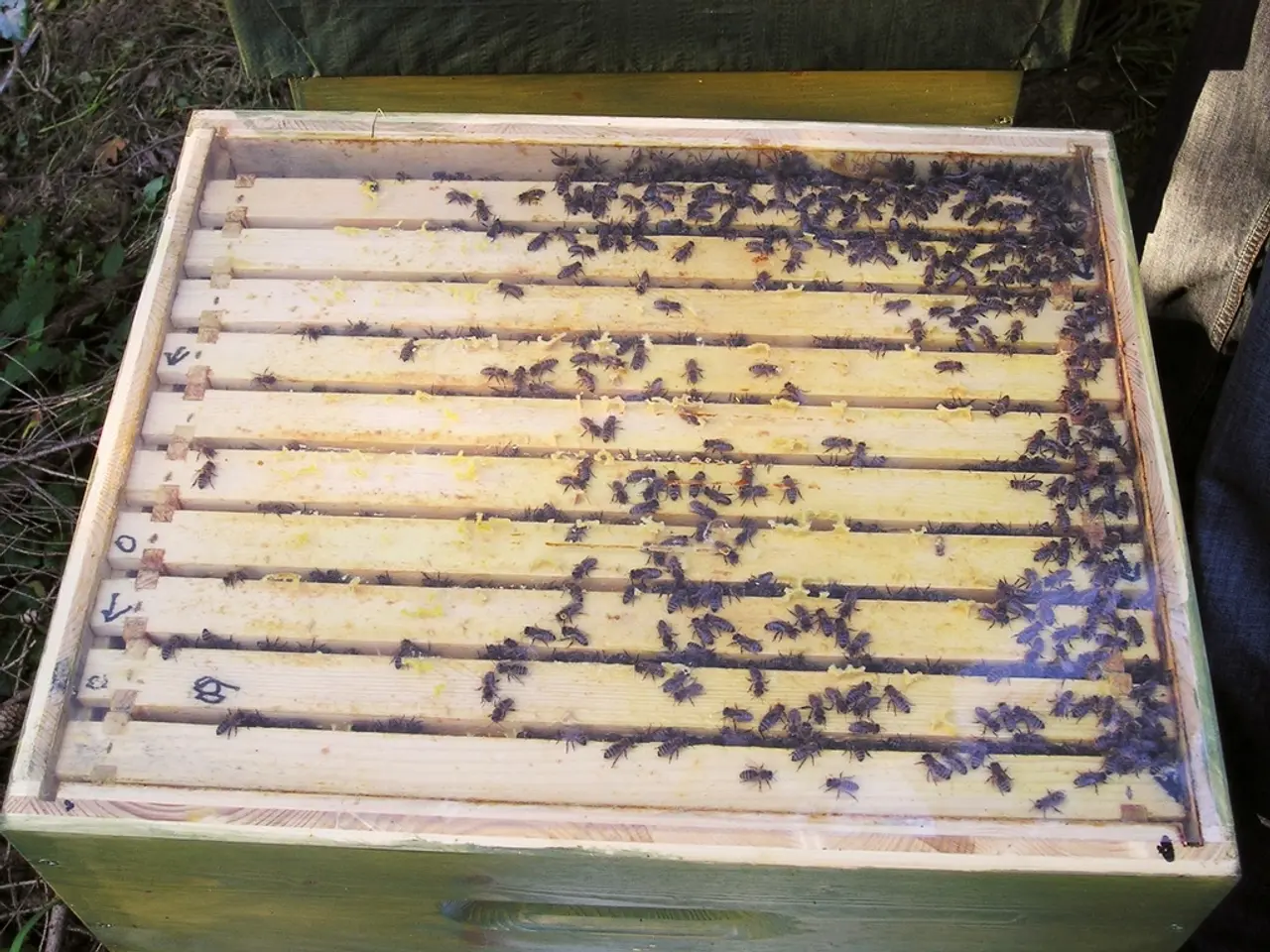Strategies for Pest Control in Organic Farming through Manual Methods
In the world of organic farming, maintaining a pest-free environment can be a challenging task. However, the Rodale Institute, a leading organisation primarily based in the United States, has published a guide titled "Manual Pest Management Strategies for Organic Farmers" to help farmers navigate this challenge.
One of the key strategies outlined in the guide is the use of physical barriers. Farmers are advised to match the barrier to the pest, using small mesh to stop cabbage moths, plant collars to protect plants from cutworms, and raised net hoops to keep birds off berries. Netting over hoops is kept taut to prevent entanglement, and a wire fence (1-2 feet high) is buried 3-4 feet deep to prevent digging by rabbits and rodents.
Farmers also employ the use of trap crops as living decoys to draw pests away from cash crops. Mustard is used as a trap crop for flea beetles on brassicas, sunflower for aphids and beetles, and radish for root maggots. Fine mesh netting is used to protect brassicas from cabbage moths, and edges should be anchored with soil or clips.
Manual labour plays a significant role in pest management. The farmer handpicks pests daily, focusing on eggs, caterpillars, beetles, and slugs. A small notebook is used to keep track of pest counts. Crop rotation, plant timing, and strict sanitation are used to reduce pest pressure and make traps and manual work more effective. Rotating families, not just crops, is important for crop rotation, checking local pest calendars is important for plant timing, and removing crop debris after harvest is important for sanitation.
The guide also emphasises the importance of regular maintenance. Seams near raised beds should be checked regularly and loose sections should be fixed. A repair kit should be kept by the shed, containing clips, tape, pins, and spare mesh, to prevent infestations from a single small gap. Rips in covers should be patched immediately, and edges should be pressed down and pinned or secured with soil.
The farmer practices pruning to remove infested stems and leaves, cutting at least 6 inches below the damage. Sticky cards are used for monitoring flying insects, pitfall traps are used for ground beetles and slugs, and pheromone traps are used for moths.
Lastly, the farmer cultivates soil shallowly to break insect nests, timing this before pests grow large. A notebook or spreadsheet should be kept to record trap counts, weather, and actions, as this helps to identify trends and prevent unnecessary work.
By following these strategies, organic farmers can effectively manage pests without the use of harmful chemicals, ensuring a sustainable and healthy environment for both the crops and the ecosystem.
Read also:
- Peptide YY (PYY): Exploring its Role in Appetite Suppression, Intestinal Health, and Cognitive Links
- Toddler Health: Rotavirus Signs, Origins, and Potential Complications
- Digestive issues and heart discomfort: Root causes and associated health conditions
- House Infernos: Deadly Hazards Surpassing the Flames








